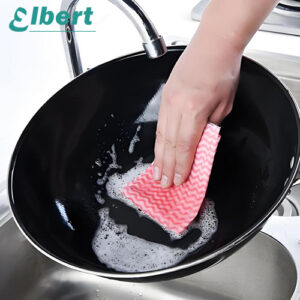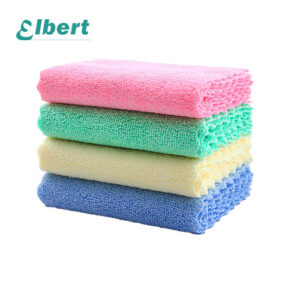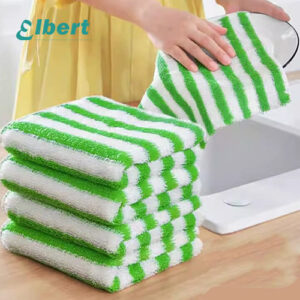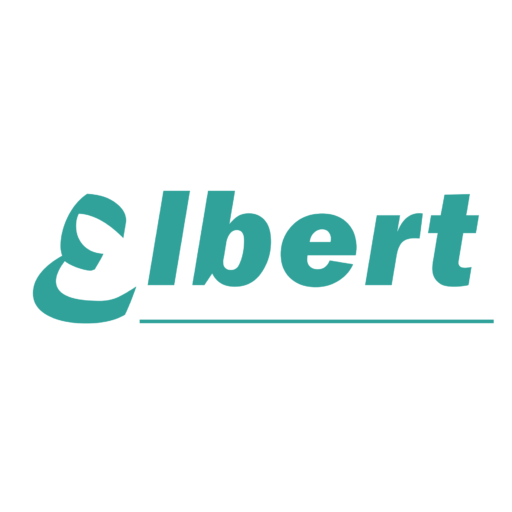Your production line halts due to incompatible wipes causing static damage. Regulatory fines pile up from non-compliant materials. How do you choose industrial wipes that balance technical performance with operational safety? Let’s decode the science.
Select industrial cleaning wipes1 by analyzing material engineering (microfiber vs. cellulose), compliance requirements (FDA/ISO/REACH), and cost-per-use models. Prioritize ESD-safe options2 for electronics and chemical-resistant blends3 for automotive sectors. Use our interactive chemical compatibility calculator to simplify decisions.
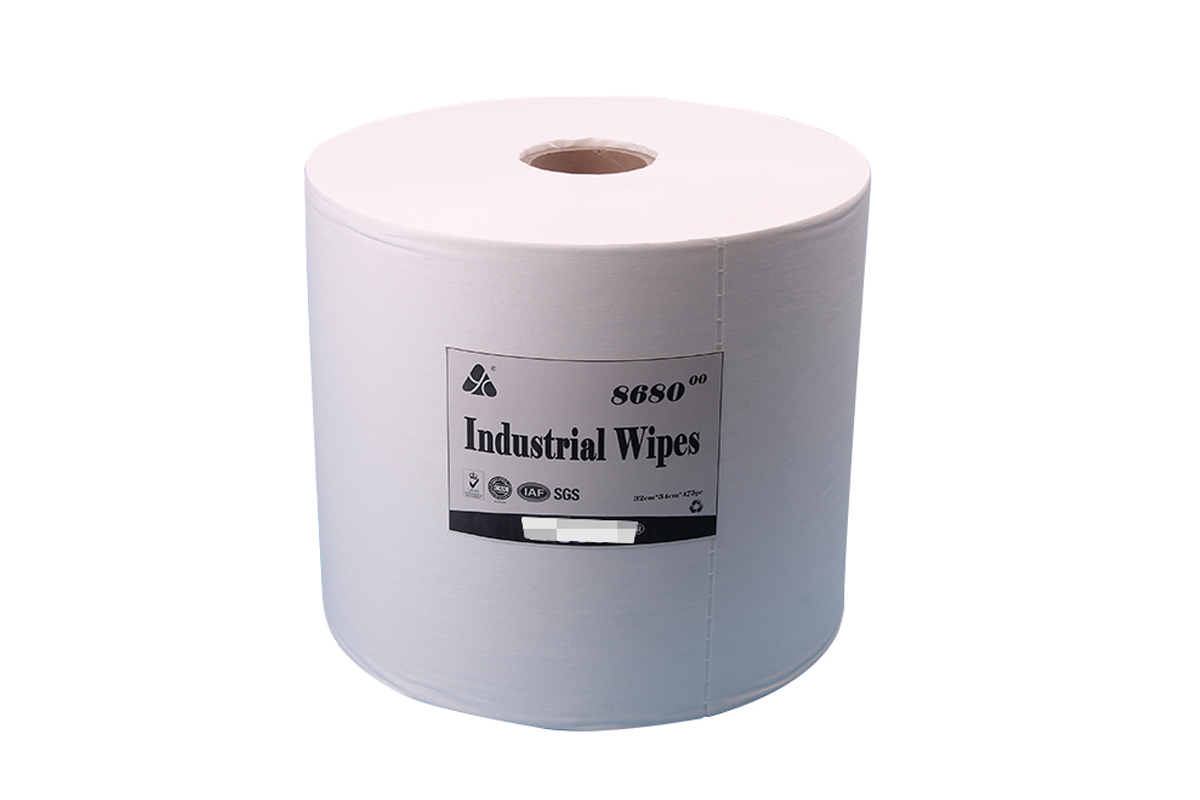
The stakes are higher than ever – a single wipe choice impacts productivity, compliance, and profitability. Let’s break down the selection process into actionable frameworks used by Fortune 500 manufacturers.
Choosing the wrong industrial wipes leads to frustrations—lint left behind, spills not fully absorbed, or even compliance risks. Agitate: I’ve felt the pain of costly wipe failures. Solution: Let’s fix that with a strategic, science-backed approach to wipe selection (so you never worry about subpar wipes again).
Industrial buyers need wipes that just work. You want durable, absorbent wipes that meet strict standards without breaking the budget. Luckily, there are proven ways to identify high-quality wipes4—by understanding materials, certifications, performance metrics, and supplier reliability.
An industrial worker uses high-performance wipes to safely clean an oil spill on a factory floor. The right wipes prevent accidents and reduce cleanup time, saving money in the long run.
Still unsure which wipes check all the boxes? I’ll walk you through everything I’ve learned—from microfiber vs. cellulose science, to ASTM/ISO standards5, to cost calculators6 and new tech—that helped me confidently choose the perfect wipe. Keep reading, and by the end you’ll have a clear roadmap for selecting wipes that won’t let you down.
What Defines the Core Performance of Industrial Wipes?
A pharmaceutical plant recalls batches due to lint contamination. The culprit? Substandard wipe materials. What molecular properties determine wipe performance7 in critical environments?
Wipe performance hinges on fiber structure8 (split microfiber for oil absorption), static control9 (carbon-loaded polymers for ESD safety), and fluid dynamics (capillary action measured by ISO 9073-6). Match materials to contaminant viscosity.
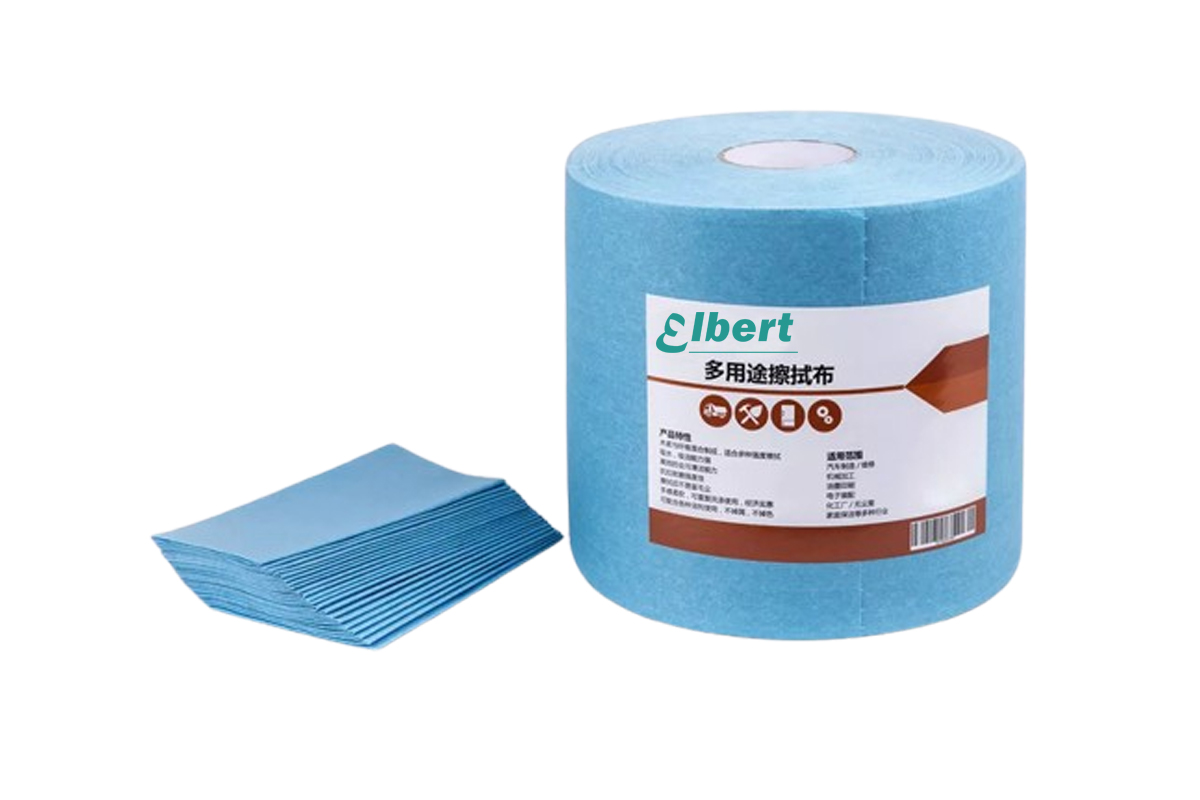
Material Engineering Comparison Table
| Property | Microfiber (Polyester/Polyamide)10 | Cellulose (Wood Pulp) | Synthetic Blends (PP+Rayon) |
|---|---|---|---|
| Fiber Diameter | 0.1-1 denier | 15-30 denier | 2-5 denier |
| Pore Size | 5-50 μm | 100-200 μm | 20-80 μm |
| Static Dissipation | <10^3 ohms (ESD-safe) | >10^11 ohms | 10^6-10^9 ohms |
| Chemical Resistance | High (pH 2-12) | Low (pH 5-9) | Medium (pH 3-11) |
Case Study: Automotive Paint Shop
When switching from cellulose to nanofiber wipes, a BMW supplier reduced solvent usage by 37% (lower viscosity η=0.89 mPa·s) while meeting VDA 19 cleanliness standards.
An aerospace supplier fails SAE AIR627811 audit due to non-traceable wipes. How do you build a compliance matrix spanning pharma, electronics, and heavy industries?
Map wipe specifications to 3 key standards: [ISO 14644-1](https://www.iso.org/standard/53394.html)12 Class 5 for cleanrooms, ANSI/ESD S20.20 for electronics, and FDA 21 CFR 177 for food contact. Maintain batch-specific CoC documentation.
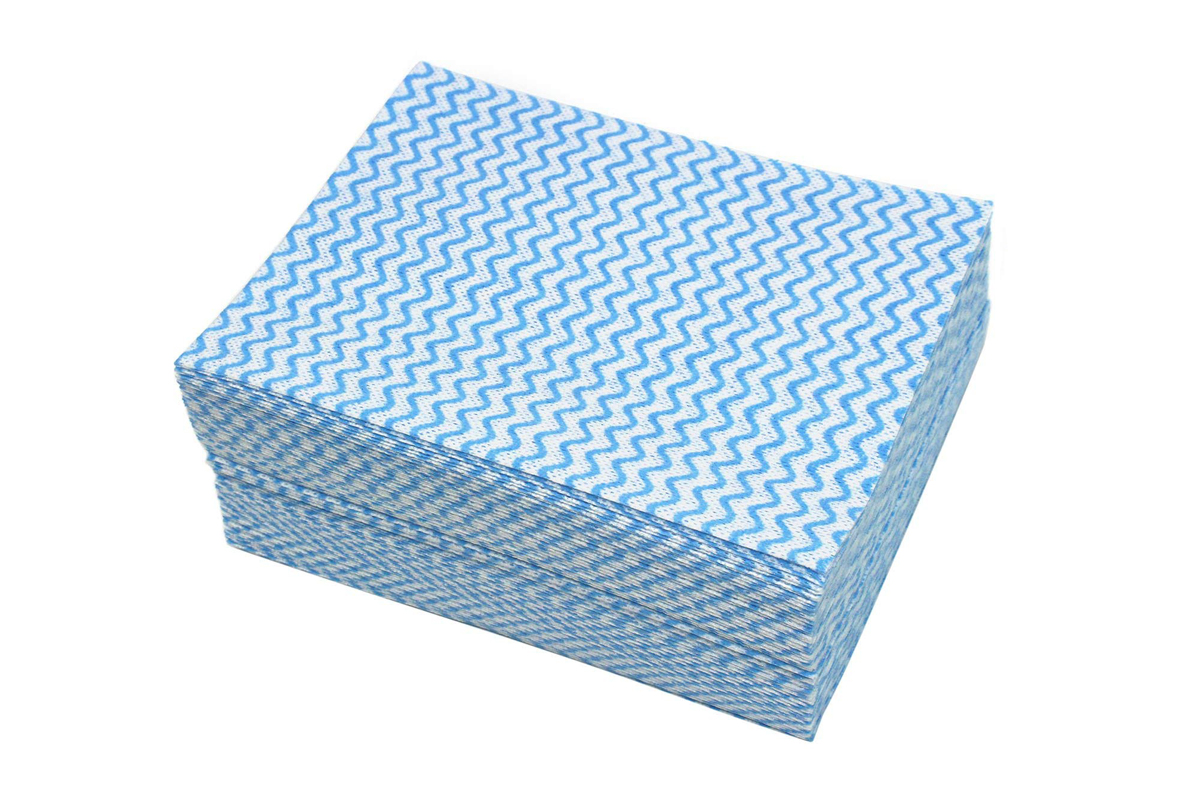
Industry-Specific Compliance Checklist
-
Pharmaceutical
- Sterility: Gamma irradiation (25 kGy dose)13
- Linting: <0.5 particles/ft³ per IEST-RP-CC004
- Documentation: Full Annex 1 audit trail
-
Electronics Manufacturing
- Surface Resistance: 10^4-10^11 ohms ([ESD S20.20](https://www.gotopac.com/art-esd-iso-standards-s20-20?srsltid=AfmBOooDqUe3aBYYAphtKCTyNMG4-GEIz06gmdVFH3ZuxW69aYeEB-vR)14)
- Ion Contamination: <0.1 μg/cm² NaCl equivalent
-
Food Processing
- Extractables: <50 ppm per [FDA 21 CFR 177.1520](https://www.law.cornell.edu/cfr/text/21/177.1520)15
- Colorfastness: ΔE<1.0 after 30min steam exposure
Compliance Risk Example
Using alcohol wipes on polycarbonate machine guards caused €12k in surface cracks for a dairy plant. Solution: Switch to Hansen solubility-matched propylene glycol blends.
Can Smart Wipes Revolutionize Industrial Maintenance?
A semiconductor fab loses $500k/week from unlogged wipe usage. How do IoT-enabled wipes transform contamination control?
Embedded RFID tags track wipe usage patterns, while pH-sensitive indicators (range 1-14) validate surface cleanliness. Smart systems cut audit prep time by 65% in pilot projects.
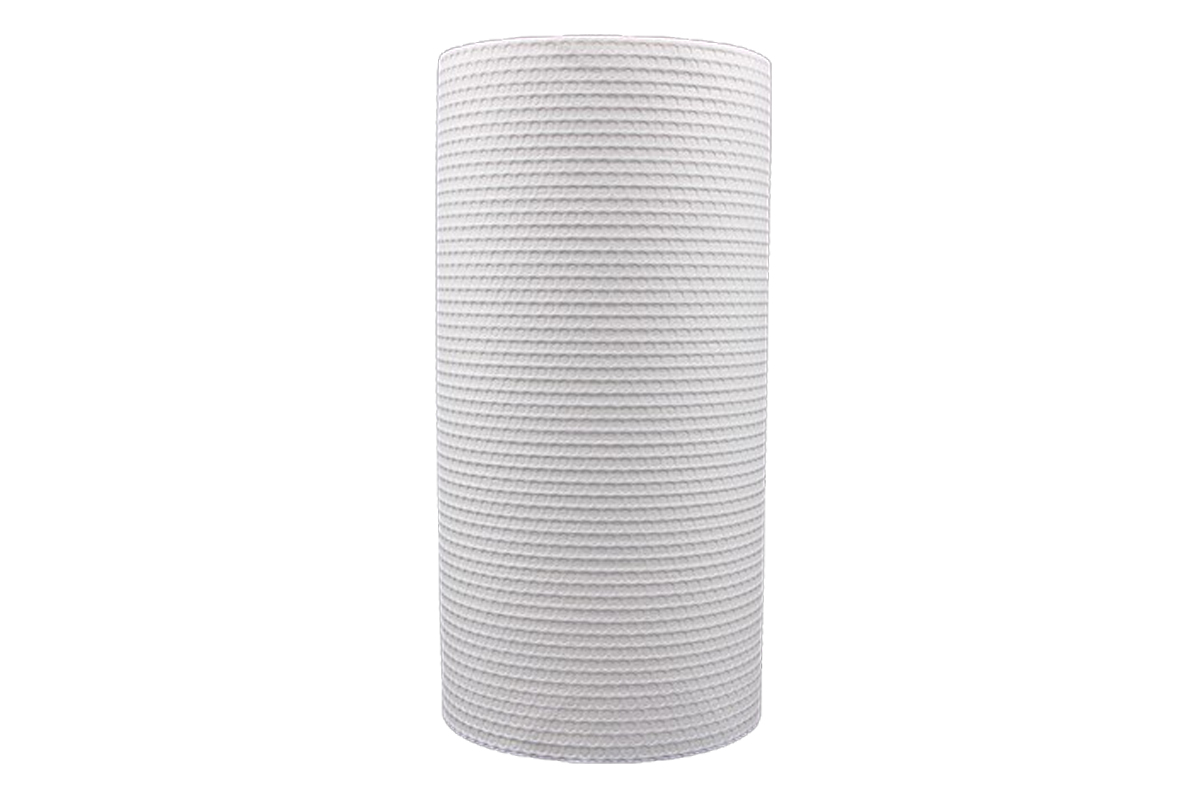
ROI Calculation for Smart Wipe Implementation
| Parameter | Traditional Wipes | Smart Wipes16 |
|---|---|---|
| Usage Tracking | Manual logs | Auto-sync via RFID |
| Compliance Proof | Lab reports | Real-time pH data |
| Audit Time Reduction17 | 0% | 65% |
| Annual Cost per Station | €2,300 | €3,100 |
| Payback Period | N/A | 8 months |
Implementation Roadmap
- Pilot 3 production lines with UHF RFID tags
- Integrate data into existing CMMS (e.g., SAP PM)
- Scale to full plant after 90-day validation
Which Wipe Material Suits Your Needs Best?
Not all wipes are created equal—use the wrong material and you’ll either smear the mess or scratch a surface. Agitate: I learned this the hard way when a cheap paper wipe disintegrated on a spill. Solution: Now I analyze wipe materials (microfiber, cellulose, synthetics) like a scientist to get the perfect match every time.
Material matters. Microfiber, cellulose, and synthetic blends each have unique strengths. Microfiber wipes boast ultra-fine fibers that grab the tiniest particles and bacteria, making them cleaning powerhouses. Cellulose (wood pulp) wipes drink up water spills quickly (often wiping surfaces bone dry in one pass, but pure cellulose can lack strength and may shed fibers. Polyester or polypropylene wipes are tough and low-lint – great for rough surfaces or oil cleanup – yet they don’t absorb water as readily. Blended wipes (poly-cellulose hydroentangled fabrics) aim to combine the best of both worlds, giving you decent absorbency with added strength and minimal lint.
Average particle sizes (e.g., human cells ~30µm, bacteria ~1–3µm, viruses ~0.1µm). Microfiber’s ultra-fine filaments mechanically pick up particles even below 1 micron, which chemicals alone might miss.
In my experience, choosing by material is step one. If you deal with oily grime in a machine shop, a durable synthetic or poly-cellulose wipe18 that “loves” oil is ideal – polyester fibers naturally absorb oils and grease. For water-based spills or lab use, high-purity cellulose or cotton wipes19 excel at soaking up liquids and are often biodegradable. Microfiber has been a game-changer for delicate or critical cleaning (think electronics or pharma): it can remove 99.9% of particles down to 0.1 µm without added chemicals, protecting equipment from microscopic residue. Keep in mind any trade-offs: cellulose can leave lint or even dissolve if it contains binders and meets a harsh solvent, whereas a knitted polyester might leave no lint but could skid over water. Often, a blend (say 55% cellulose/45% polyester hydro-entangled) gives a nice balance – high absorbency plus strength and low-lint, with no glues to dissolve. The key is to match the wipe substrate to your mess and surface. I always ask: Is it a water-based spill or oil? Do I need lint-free softness20 or just raw toughness? Answering these steers me to the right material every time.
Do Your Wipes Meet Industry Standards and Regulations?
Problem: A wipe that isn’t compliant can shut down your operation—imagine failing an audit due to fibers in a cleanroom or uncertified wipes in a food plant. Agitate: I’ve seen teams scramble because their wipes didn’t meet FDA or ISO standards. Solution: I ensure every wipe is certified for our industry (and you should too), from particle control to static safety.
Quality and compliance are non-negotiable. Industrial wipes often must adhere to rigorous standards. For example, cleanroom manufacturing requires wipes that match the cleanliness class of the environment. A Class 100 (ISO 5) cleanroom only permits ultra-low lint wipes (like laundered polyester) that won’t shed particles, whereas a maintenance shop might be fine with an ISO 8 rated poly-cellulose wipe. Always check if the manufacturer specifies an ISO 14644 cleanroom class21 for the wipe. In electronics or explosive environments, static control is vital—ESD-safe wipes22 woven with conductive fibers help dissipate static charge to protect sensitive components. I opt for these whenever we’re wiping circuit boards or CMOS sensors, preventing invisible static damage that could fry devices.
Caution: Electrostatic-sensitive devices. In ESD-safe areas (like electronics assembly), specialized wipes with carbon or metallic fibers safely dissipate static. Standard wipes could generate a charge and zap your microchips.
Industry-specific regulations also come into play. If your wipes touch any food or pharma product contact surfaces, they should be FDA-compliant for food contact and ideally come with documentation like FDA 21 CFR certificates. In my food processing plant audits, I ensure our wipes are “FDA 21 CFR 177.2800 compliant23” (food-safe material) and meet HACCP plans. For European operations, I look for REACH compliance and RoHS certification, confirming the wipes contain no hazardous substances like certain flame retardants or heavy metals. This isn’t just paper-pushing—one supplier’s rags turned out to have high heavy metal content. I swiftly replaced those with certified clean wipes.
Don’t forget voluntary standards and tests: ASTM and ISO have test methods for wipe cleanliness (particle shedding, extractables) and absorption. While I won’t bore you with test numbers, I do compare data sheets. For instance, ASTM shedding tests or ISO particle counts can tell you how “clean” a wipe truly is. A reputable supplier will gladly share these results. Bottom line: insist on standards. Whether it’s an ISO class rating, ESD certification, or FDA compliance letter, make sure your chosen wipe checks the compliance box. It saves headaches and ensures you’re not inadvertently introducing contamination or legal risks into your process.
How Do These Wipes Perform in Real-World Use?
Problem: A wipe can look good on paper but perform poorly on the floor. (Ever had a wipe just smear oil around or tear mid-job? I have.) Agitate: Those moments are messy and costly—extra labor, repeat cleaning, maybe even product scrap. Solution: Now I vet wipes with the real-world in mind: absorbency tests, case studies, and failure scenarios guide my choices.
Performance is king. The core job of a wipe is to clean up without creating new problems. So, I pay close attention to two metrics: absorbency24 and cleanliness25. Absorbency isn’t just about how much liquid a wipe can hold, but also what type of liquid. A pro tip I learned: oil and water behave very differently. Cellulose-based wipes are naturally hydrophilic (water-loving), making them champs for water-based spills or solvents – one double-ply cellulose wipe can slurp up a puddle fast, often absorbing ~90% of the liquid in one go. But that same cellulose wipe might struggle with heavy oils or grease, sometimes just pushing it around. Conversely, polyester is hydrophobic but “oleophilic” (oil-loving); a polyester knit or poly-blend wipe will lift motor oil or machine grease with ease, whereas plain water might bead up on it. Knowing this, I match wipe to spill: for coolant (water-based) I grab the cellulose-rich wipe; for an oily mess, the synthetic or a specially treated wipe meant for oils.
Residual stain test: Surfaces wiped with different materials show varying results. Top: Microfiber wipe removed almost all residue. Middle: Lint-free polyester knit left only a light trace. Bottom: Nonwoven poly-cellulose wipe left a noticeable streak. Real-world trials like this reveal which wipe truly cleans vs. spreads contaminants.
I also consider rate vs. capacity. Some wipes absorb super fast (snatching a spill before it spreads) but hit saturation quickly; others take a moment to wick but ultimately hold a lot more fluid. In practice, I’ve found a thick rayon/poly blend can act like a sponge – great capacity – but a microfiber might instantly grab a small spill with no dripping. If continuous wiping of large spills is routine, total capacity per wipe matters (fewer wipe changes). However, for precision cleaning (like wiping a part before painting), you care about how clean the surface is after wiping. This is where wipe cleanliness and linting come in. A “clean” wipe won’t leave fibers, residue, or ions. Ever seen tiny lint or haze left after wiping? That’s a fail for critical work. For instance, in a paint shop or cleanroom, I choose sealed-edge polyester wipes that are laser-cut to prevent loose fibers, ensuring no bits are left behind on our product.
I often do my own quick trials: wipe a mirrored surface and see if it streaks; or spill a teaspoon of oil on concrete and time how many wipes it takes to completely remove it. Recently, a case study in our shop compared an expensive microfiber versus a budget poly-cellulose on an oily machine part. The microfiber took up the oil in a couple swipes and the part was visibly clean (no film). The cheaper wipe required vigorous scrubbing and still left a thin film we had to solvent-rinse. That little test told me the pricier wipe was worth it for that application. Always align performance to your use-case: if it’s a single wipe to disinfect a surface, you need one that evenly releases the cleaning agent26 too (some wipes absorb but won’t release fluid well). If it’s scrubbing burnt-on grime, you need strength (consider textured or woven wipes). By thinking through what the wipe needs to do in your hands, you can pick one that won’t let you down on the job.
What Tools Can Help You Choose the Right Wipes?
With hundreds of wipe options, it’s easy to feel overwhelmed or rely on trial-and-error. Agitate: I used to gamble on new wipes without data—sometimes I got lucky, often I didn’t. Solution: Now I use selection tools and scientific data (yes, even formulas and charts) to predict a wipe’s performance and compatibility before I buy in bulk.
Leverage science and data in your decision. One method I swear by is using Hansen Solubility Parameters (HSP)27 when pairing wipes with chemicals. Sounds fancy, but HSP is basically a way to quantify “like dissolves like.” If you’re cleaning a particular ink, grease, or residue, you want a solvent that will dissolve it effectively. And if you pre-soak wipes in that solvent, you need to ensure the wipe material itself won’t dissolve or degrade. HSP charts and software let me input the soil and solvent parameters to predict a good match. As Dr. John Durkee famously noted, even the safest, cheapest solvent won’t clean if its chemistry doesn’t match the soil’s. Knowing this, I choose wipe-solvent combos wisely. For example, if a solvent has a high hydrogen-bonding parameter, I avoid wipes with binders that might break down in it (the SDS of the solvent often hints at this too).
Empirical cleaning graph: Dr. Durkee plotted HSP “distance” (mismatch between solvent and soil) vs. percent soil remaining. The red line shows a cutoff (Ra > 8) where cleaning efficacy drops. This kind of data informs which solvents – and thus which wipe materials – will actually work without leaving residue.
Another crucial tool is the chemical compatibility chart28. Many suppliers (and resources like Cole-Parmer) publish compatibility tables for materials (polypropylene, nylon, cotton, etc.) against dozens of chemicals. Before I approve a wipe for use with, say, acetone or bleach, I check that chart. For instance, polypropylene has broad chemical resistance but will be attacked by strong oxidizing acids and certain solvents. If I see a warning that a wipe material is incompatible with a cleaning agent we use (e.g., a binder in a cellulose wipe might dissolve in acetone, contaminating the surface), I rule it out. Safety Data Sheets (SDS)29 for the chemicals we clean can provide clues too—some SDS explicitly say “avoid using cellulose-based materials” or recommend inert absorbents for spills. I cross-reference these hints with the wipe specs.
I also employ some practical evaluation tools30: we have a small testing station where I measure a wipe’s absorbency rate (a simple drip test: how many seconds to absorb a drop of liquid) and capacity (how many mL of liquid until drip). We use a black glass and UV light to see if a wipe leaves lint or fluorescing residue after wiping a fluorescent dye solution—this helps simulate cleaning performance for residues we can’t see with the naked eye. It’s essentially our mini lab to validate what the datasheets claim. Additionally, I maintain documentation for each approved wipe: technical data sheets, certificates (like ISO class or RoHS compliance), and even lot test results if available. This documentation protocol means if something goes wrong (imagine a contamination issue in our cleanroom), I can quickly trace if a wipe was to blame or if a bad batch slipped in, and have data to back it up.
In short, arm yourself with data. Use HSP to smartly choose solvents and wipe material combinations, consult compatibility charts to avoid nasty reactions (no one wants a wipe that falls apart mid-wipe or leaches chemicals), and keep records of wipe performance. These tools take the guesswork out of selection and give you confidence that the wipe you pick will play nicely with your process and chemicals. Trust me, a little analysis upfront can save a ton of trouble later.
Is Cheaper Better? Understanding Cost & ROI of Wipes
“They’re just wipes – get the cheapest!” I’ve heard this, and it’s a trap. Agitate: Initially, I bought bargain wipes to save money, only to spend more replacing them frequently and fixing issues they caused (extra labor, damaged product). Solution: I learned to calculate the Total Cost of Ownership (TCO)31 for wipes – revealing that sometimes the “expensive” wipe actually costs less overall.
Look beyond the price tag. A few years back, I did a TCO analysis that was quite eye-opening. TCO means accounting for all costs over the wipe’s lifecycle. Sure, a case of basic shop rags might cost 50% less than engineered wipes initially. But here’s what happened: the rags came in inconsistent sizes, so workers would use 2–3 at a time to get enough coverage (more usage). They shed lint and even had metal shavings (since they were recycled textiles), leading to product contamination that we had to re-clean or scrap. We also paid to launder or dispose of oily rags (hazardous waste fees aren’t cheap). When we ran the math, those “cheap” rags were inflating our costs through wasted labor, lower efficiency, and higher reject rates.
I switched to a standardized industrial wipe and measured the difference. One strong wipe could do the work of several rags, and no more time wasted picking out lint. In fact, studies and our own tests show that a single roll of quality wipes can replace 5–6 kg of traditional rags32 because of the wipes’ superior absorbency and consistency. Plus, no sorting or cutting needed – every wipe is ready to go out of the box, saving labor. We literally had workers spending time cutting up t-shirt rags before; that time now goes to actual productive work. The TCO factors I consider include: how many wipes get used per task (a high-performance wipe might cut usage by half), how much labor per task (does it clean faster?), and ancillary costs like storage, waste disposal, and potential impacts on product quality.
A pile of used cloth rags awaiting laundering or disposal. They seem cheap upfront, but hidden costs (sorting, washing, inconsistent performance) add up. High-quality engineered wipes often replace rags at a fraction of the total cost.
To put numbers on it, I created a simple ROI spreadsheet: It factored that our new wipes cost $0.10 each vs $0.03 per rag (approximate). However, each wipe handled 3× the area of a rag, and our defect rate due to lint dropped by 80%. When I rolled in the cost of rework from particles, the labor saved in handling fewer wipes, and eliminated laundry service fees, the “expensive” wipe was actually saving us money after just a couple months. Wipestar (one supplier) notes that using low-quality wipes might save pennies now but “frequent replacements, increased labor time, and potential equipment damage will inflate TCO over time.” I couldn’t agree more. We saw how subpar wipes left lint inside a sensitive valve, causing a failure that cost us hours of downtime – a huge hidden cost.
Also consider waste and environmental fees: switching from rags to disposable wipes reduced our solvent-laden waste weight, since we weren’t throwing out heavy cloth soaked in chemicals (the wipes are engineered to release solvent during use, not hold excess). This cut our hazardous waste disposal costs33 noticeably. Some premium wipes are even designed to be used with refillable canisters or come compressed in rolls that save storage space and reduce packaging waste, further improving cost-in-use.
In summary, cheaper is not always cheaper when it comes to wipes. I encourage sourcing folks to calculate TCO: factor in how many wipes you burn through, how they impact productivity, and any quality risks. Often, a mid-priced wipe with high durability and absorbency yields a solid ROI by reducing usage quantity and avoiding downstream costs. One guideline I use: if a wipe prevents just one batch of product from being scrapped or one hour of equipment downtime a year, that alone might pay for the small premium. Think long-term and holistic cost, and you’ll make the choice that truly saves money.
How Can Innovations and the Right Supplier Future-Proof Your Wipes Strategy?
The world of industrial wipes isn’t static—new technologies and materials are emerging. Plus, a great product is useless if your supplier can’t deliver consistently. Agitate: I once loved a particular wipe, but frequent backorders from a flaky supplier left my team high and dry. Solution: Now I factor in innovation and supplier reliability as strategic must-haves, ensuring our wiping solutions stay ahead of the curve (and are always in stock).
Innovation in wipes might sound surprising, but it’s real and can give you an edge. For instance, some manufacturers are introducing smart wipes34 with RFID tags in the packaging to help track usage and inventory automatically. Large facilities (think aerospace assembly lines or hospitals) are experimenting with these to monitor how many wipes are used in each department, preventing stockouts and even flagging unusual usage patterns. While an individual wipe with a chip is overkill for most, the concept of smarter inventory management is a plus – I’ve started using vendor-managed inventory where our supplier’s system auto-replenishes our stock when it’s low, almost like a Kanban with sensors. Another nifty innovation: indicator wipes that change color to signal saturation or contamination. One product, for example, has a blue tint that turns white when exposed to certain liquids. This helps workers immediately see if a dangerous chemical is on the wipe or if a disinfectant wipe has dried out (no one wants to unknowingly use a dry “disinfecting” wipe). There are also wipes with pH indicators built in, used in pharma cleaning to ensure that after an acid cleaner is wiped, the surface is neutralized (the wipe changes color if any acid or base remains). These smart features act like an extra QA check during cleaning.
Sustainability is another frontier. We’re seeing eco-friendly wipes35 made from bamboo fibers, 100% organic cotton, or recycled materials. Initially, I was skeptical about “green” wipes, worrying they might sacrifice performance. But I tested a biodegradable cotton wipe and was pleasantly surprised – it was strong (due to a twill weave) and heat-resistant for heavy-duty cleaning, yet completely biodegradable. Using such wipes can support corporate sustainability goals (e.g., reducing plastic waste from polyester wipes). Some even meet compostability standards. Additionally, new manufacturing processes like hydroentangling and ultrasonic cutting reduce the need for chemical binders and ensure cleaner edges, resulting in wipes that are both cleaner and greener than older types.
Now, none of these innovations matter if you can’t get the wipes when and where you need them. That’s why the supplier is just as crucial as the product. I treat selecting a wipe supplier like choosing a strategic partner. First, I look at their quality systems: are they ISO 9001 certified for quality management? That gives me confidence in consistent production. I also ask about their lot tracing and documentation—good suppliers provide Certificates of Conformance or Analysis with each batch, and have no issue with audits. Reliability and responsiveness are key: Does the supplier keep ample stock or lead times that fit your needs? Do they offer inventory programs or emergency support? One tip: I always keep an open line with our wipe supplier about usage forecasts. This helps them ensure product is on hand. In one case, our supplier even warehoused a safety stock for us that we could draw from in case of sudden demand spikes.
Consistent, high-quality wiping in action at a commercial facility. Working with a reliable supplier means you always have the right wipes on hand, and new innovations (like more durable, pure wipes) are readily available to keep operations running smoothly.
Don’t be afraid to evaluate and negotiate36 with suppliers. I send out a detailed requirements list (needed specs, certifications, volume, and service expectations) and let prospective vendors propose solutions. This often surfaces value-added services: one vendor might offer on-site training for your staff on proper wiping techniques (preventing misuse and waste), another might bundle dispensing systems or offer a bulk discount if you standardize all your sites on their product. When negotiating, consider multi-year agreements to lock in prices and supply – but ensure there’s flexibility in case an even better wipe technology comes along (I include a clause that allows testing and adopting new products). A strong supplier will also keep you informed of new developments. In fact, I learned about RFID smart dispensing and the latest low-lint bamboo wipe from a supplier’s quarterly newsletter. That insight let me pilot those advances before competitors.
Ultimately, future-proofing your wiping strategy37 means staying informed about new tech and being choosy about who you buy from. The best suppliers drive innovation and ensure you never have to worry about stockouts or subpar quality. I regularly review our supply base: if a supplier starts slipping on deliveries or stops innovating, I’m not afraid to seek alternatives who are hungry to provide better service. By embracing new wipe technologies and locking in dependable supply partners, you ensure your operation’s cleaning needs will be met efficiently not just today, but for years to come.
Conclusion
Master wipe selection through material science, compliance mapping, and smart tech adoption. Turn cleaning into a strategic advantage.
Selecting industrial wipes isn’t trivial—it’s strategic. By understanding materials, enforcing standards, crunching TCO numbers, and embracing innovation with a reliable supplier, you’ll secure wipes that do the job right and boost your bottom line38.
Elbert Zhao
Founder, ELBERT Wipes Solutions
📧[email protected] | 🌐 www.elbertwipes.com
8 production lines | 22 processing lines | OEKO-TEX certified | Walmart-approved supplier
-
Explore this link to discover top-rated industrial cleaning wipes that ensure compliance and safety in your operations. ↩
-
Learn about ESD-safe options to protect your electronics from static damage and ensure operational efficiency. ↩
-
Find out which chemical-resistant blends are most effective for automotive applications, enhancing safety and performance. ↩
-
Explore this link to discover top-rated high-quality wipes that meet industrial standards and enhance productivity. ↩
-
Understanding ASTM/ISO standards is crucial for compliance and quality assurance in wipe selection. Check this resource for detailed insights. ↩
-
Cost calculators can significantly aid in budgeting and decision-making for industrial wipes. Learn more about their benefits here. ↩
-
Understanding wipe performance is crucial for maintaining cleanliness in sensitive areas. Explore this link to learn more about effective materials and their properties. ↩
-
Fiber structure plays a vital role in the efficiency of wipes. Discover how different structures can enhance cleaning capabilities in various applications. ↩
-
Static control is essential for preventing contamination in sensitive environments. Learn more about its significance and applications in this resource. ↩
-
Explore the advantages of microfiber in various industries, including its superior cleaning capabilities and durability. ↩
-
Learn about SAE AIR6278 compliance to ensure your products meet aerospace industry standards and avoid audit failures. ↩
-
Understanding ISO 14644-1 is crucial for maintaining cleanroom standards and ensuring product quality in sensitive environments. ↩
-
Understanding Gamma irradiation’s role in sterility can enhance your knowledge of pharmaceutical safety standards. ↩
-
Exploring ESD S20.20 will provide insights into essential practices for preventing electrostatic discharge in electronics. ↩
-
Learning about FDA 21 CFR 177.1520 is crucial for ensuring safety and compliance in food processing materials. ↩
-
Explore how Smart Wipes can enhance efficiency and compliance in your cleaning processes, making them a smart investment. ↩
-
Learn how reducing audit time can streamline operations and save costs, enhancing overall productivity in your facility. ↩
-
Explore the advantages of durable synthetic or poly-cellulose wipes for effective cleaning in various environments. ↩
-
Learn why high-purity cellulose or cotton wipes are essential for lab environments, ensuring cleanliness and safety. ↩
-
Discover the significance of lint-free softness in cleaning wipes, especially for sensitive equipment and environments. ↩
-
ISO 14644 standards are vital for maintaining cleanliness in sensitive environments. Discover more about these standards and their applications. ↩
-
ESD-safe wipes are essential for protecting sensitive electronic components. Learn more about their benefits and applications in this informative resource. ↩
-
Understanding FDA compliance is crucial for ensuring safety in food processing. Explore this link to learn more about the standards and their implications. ↩
-
Understanding absorbency helps you choose the right wipe for different spills, ensuring effective cleaning without mess. ↩
-
Exploring cleanliness in wipes can guide you to select products that leave no residue, crucial for sensitive environments. ↩
-
Choosing the right cleaning agent is crucial for effective cleaning. This resource will guide you in selecting the best options for your needs. ↩
-
Understanding HSP can significantly enhance your cleaning efficiency by ensuring the right solvent and wipe combination. Explore this resource to learn more. ↩
-
Understanding chemical compatibility charts is essential for safe material selection in cleaning processes. Explore this resource to enhance your knowledge. ↩
-
Safety Data Sheets are crucial for understanding chemical hazards and safe handling practices. Learn more to ensure safety in your operations. ↩
-
Discover practical evaluation tools that can help you assess cleaning materials effectively, ensuring optimal performance and safety. ↩
-
Understanding TCO is crucial for making informed purchasing decisions. Explore this resource to learn how to calculate TCO effectively. ↩
-
Discover the efficiency benefits of engineered wipes over traditional rags, including cost savings and performance improvements. ↩
-
Learn about the hidden costs of hazardous waste disposal and how switching to engineered wipes can reduce these expenses significantly. ↩
-
Explore how smart wipes can enhance inventory management and improve operational efficiency in your facility. ↩
-
Discover the advantages of eco-friendly wipes and how they can support sustainability goals while maintaining performance. ↩
-
Exploring this resource will provide you with strategies to enhance your negotiation skills and supplier relationships. ↩
-
This link will offer insights into innovative practices that can keep your wiping strategy ahead of the curve. ↩
-
Discover how strategic supplier management can lead to significant financial benefits for your business. ↩


